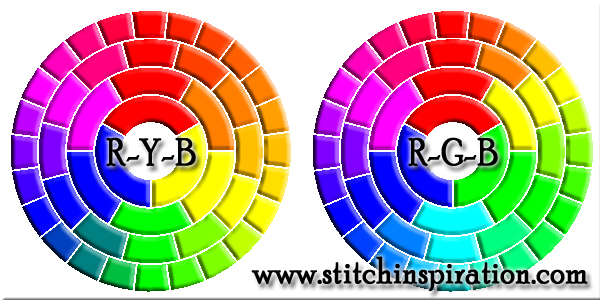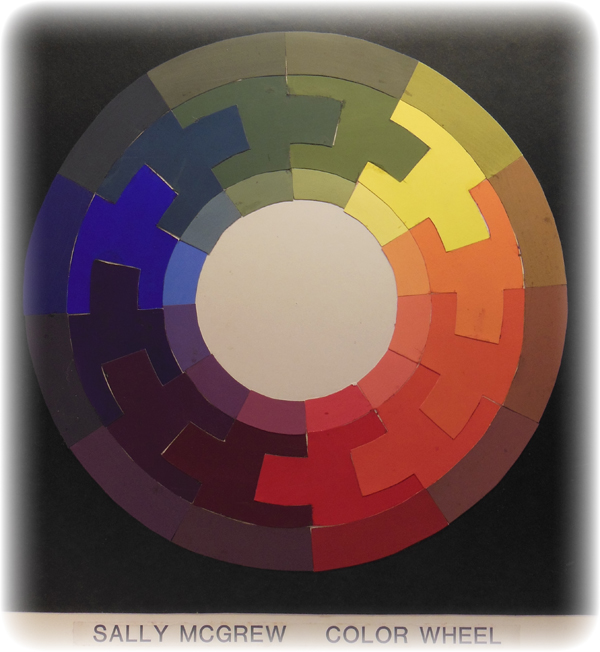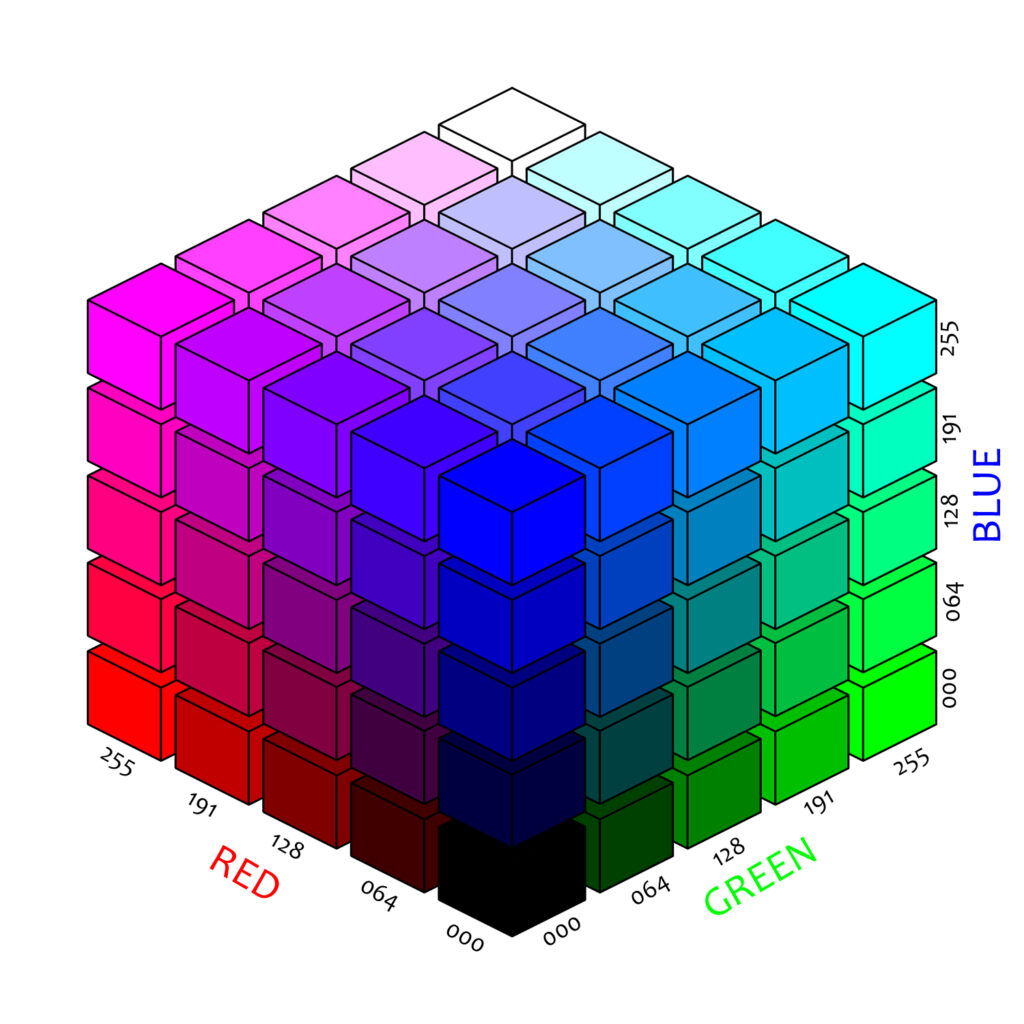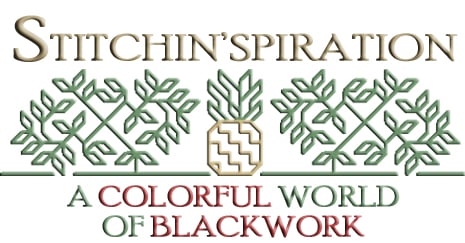
26 Feb Case of the dueling color systems
As we have previously seen, there are many different ways that color can be organized and studied. We don’t need to look at all of them to get us playing with color in fabric and thread. But looking at some of them will help us make good decisions in choosing colors.
Out of all these color systems, we’re going to take a look at two of them. Here’s a quick explanation about both the Red-Yellow-Blue and the Red-Green-Blue systems:

Red – Yellow – Blue (RYB) – A “subtractive” color system
It is a “subtractive” system, in that the pigments are mixed such to subtract the reflection of light.
Red, Yellow, and Blue are the primary colors in this system, and are used to mix all other colors. White and black are mixed in for lightening or darkening the colors.
This is the color system that most artists use as they’re mixing paints and pigments. You’ve probably seen photographs of paint palettes and paint studies that artists use in helping them mix just the right colors for their creations. In college I learned first hand about this method of looking at color. One of our courses had us making / mixing our own color wheel using just red, yellow, and blue paints. My final product might not be the most beautiful piece, but I believe that from this specific assignment, I began to love the investigation about how color works.

Red – Green – Blue (RGB) – An “additive” color system
It is an “additive” system, in that when the color is mixed entirely, it gives you white (255,255,255). When there is no color (0,0,0), you get pure black.
Red, Green, and Blue are the primary colors in the system, and these colors are referred to by a combination of 3 numbers. 255-0-0 represents true Red. 0-255-0 represents true Green. And 0-0-255 represents true Blue.
You’re more familiar with this system probably, as this is one of the systems used in the digital world. Combines red-green-blue light to create the colors seen on electronic devices. You see reference to this system every time you’re working in an electronic document and want to change the color of something. Your program most likely will bring up a color block, and will ask you to change the values of R, G, or B to choose just the right color.
This system organizes color numerically, which totally talks to my math-geek side. Red, Green, and Blue are each assigned a number in the “equation”. Each number speaks to how much of that color is mixed in to the overall formula. You can look at this system almost as a cube – working on the 3 axes.
And to tell the dirty truth, I have played around with numbers and spreads with this system. Yes, have I reminded you enough about what a math geek I can be?
Why look at a couple of different color systems? I like to see how the different systems end up with different colorations relating to each other. Take a look at the side by side images of the RYB and RGB systems here. Note how the colors between red and blue are essentially the same. But then look on the other side of the wheel, and the difference is clearly seen. The RYB wheel provides you with more of the warm colors – reds, oranges, and yellows. And the RGB wheel provides you more cool colors – blues, cyans, and greens. Mixing the different colors together made a huge difference in what colors came out.
Ultimately, in today’s world of digital – there are many ways to organize color, but they all basically just try to put colors into a framework within which we can play. And play we will. In the next few posts in this series, we’re going to look more at how colors are mixed, and how the actual color wheels are built. My goal with these discussions, is to help you begin to build your own color palettes in thread.
And remember, although there might be people who say otherwise – but I do not believe that there is a single right way to look at color. What does that mean to a stitcher? Well, that just should tell you that when choosing colors there is no right or wrong way – there’s just YOUR way.
Are you ready to play around with color and thread?
Happy stitchin’!
Sally


No Comments